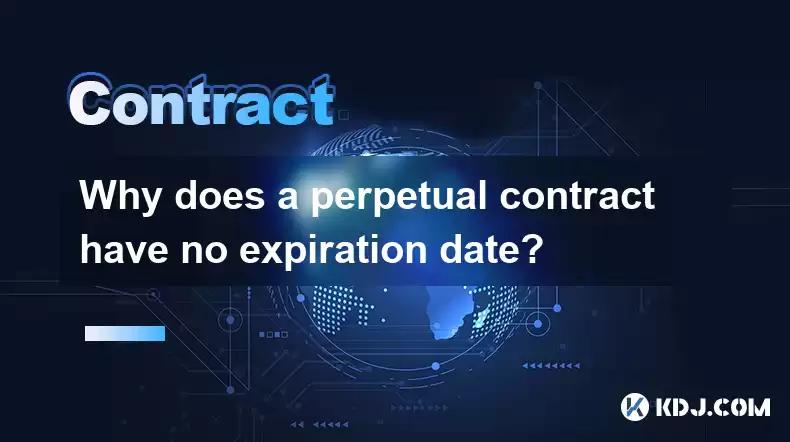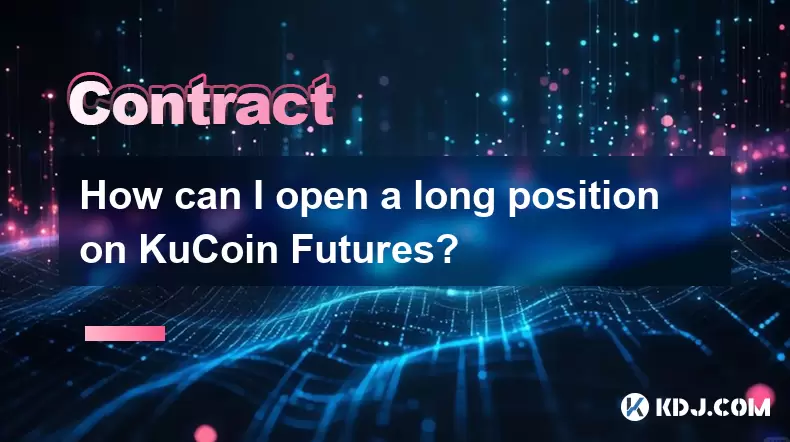-
 Bitcoin
Bitcoin $116700
0.24% -
 Ethereum
Ethereum $3973
4.34% -
 XRP
XRP $3.283
7.68% -
 Tether USDt
Tether USDt $1.000
0.01% -
 BNB
BNB $789.8
2.27% -
 Solana
Solana $176.2
3.31% -
 USDC
USDC $0.9999
0.00% -
 Dogecoin
Dogecoin $0.2238
5.14% -
 TRON
TRON $0.3389
-0.51% -
 Cardano
Cardano $0.7907
4.03% -
 Stellar
Stellar $0.4527
10.02% -
 Hyperliquid
Hyperliquid $41.07
4.27% -
 Sui
Sui $3.794
1.77% -
 Chainlink
Chainlink $19.49
10.40% -
 Bitcoin Cash
Bitcoin Cash $580.9
0.74% -
 Hedera
Hedera $0.2617
4.32% -
 Avalanche
Avalanche $23.41
3.67% -
 Ethena USDe
Ethena USDe $1.001
-0.03% -
 Litecoin
Litecoin $122.4
1.38% -
 Toncoin
Toncoin $3.364
1.49% -
 UNUS SED LEO
UNUS SED LEO $8.988
0.37% -
 Shiba Inu
Shiba Inu $0.00001295
2.82% -
 Uniswap
Uniswap $10.62
5.75% -
 Polkadot
Polkadot $3.922
4.46% -
 Dai
Dai $1.000
0.01% -
 Bitget Token
Bitget Token $4.494
2.15% -
 Monero
Monero $268.0
-1.30% -
 Cronos
Cronos $0.1523
3.68% -
 Pepe
Pepe $0.00001127
4.43% -
 Aave
Aave $285.4
4.85%
Why does a perpetual contract have no expiration date?
Perpetual contracts, popular in crypto, don't expire due to a funding rate mechanism that aligns their price with the underlying asset's spot price.
Apr 09, 2025 at 08:43 pm

Perpetual contracts, also known as perpetual futures or perpetual swaps, are a type of derivative product that has gained significant popularity in the cryptocurrency market. Unlike traditional futures contracts, which have a fixed expiration date, perpetual contracts do not expire. This unique feature raises the question: why does a perpetual contract have no expiration date? To understand this, we need to delve into the mechanics and purpose of perpetual contracts.
The Mechanics of Perpetual Contracts
Perpetual contracts are designed to mimic the price movements of the underlying asset, such as Bitcoin or Ethereum, without an expiration date. This is achieved through a mechanism known as the funding rate. The funding rate is a periodic payment that is exchanged between long and short positions to ensure that the price of the perpetual contract remains closely aligned with the spot price of the underlying asset.
- If the funding rate is positive, long positions pay short positions.
- If the funding rate is negative, short positions pay long positions.
This funding mechanism helps to prevent the perpetual contract price from diverging significantly from the spot price over time. By continuously adjusting the funding rate, the contract can maintain its value relative to the underlying asset indefinitely, thus eliminating the need for an expiration date.
The Purpose of Perpetual Contracts
The primary purpose of perpetual contracts is to provide traders with a flexible tool for speculating on the price movements of cryptocurrencies without the constraints of an expiration date. Traditional futures contracts require traders to roll over their positions to a new contract as the expiration date approaches, which can be cumbersome and may result in additional transaction costs.
With perpetual contracts, traders can hold their positions for as long as they wish, without the need to worry about rolling over to a new contract. This flexibility is particularly appealing in the volatile cryptocurrency market, where traders may want to maintain their positions over extended periods to capitalize on long-term trends.
Comparison with Traditional Futures Contracts
To better understand why perpetual contracts do not have an expiration date, it is helpful to compare them with traditional futures contracts. Traditional futures contracts are agreements to buy or sell an asset at a predetermined price on a specific future date. These contracts are standardized and traded on exchanges, with each contract having a set expiration date.
When a traditional futures contract expires, the contract is settled, either through physical delivery of the asset or through cash settlement. This expiration process can lead to significant price volatility as traders close out their positions and roll over to new contracts.
In contrast, perpetual contracts do not have an expiration date, and thus, there is no need for settlement or rolling over to a new contract. The funding rate mechanism ensures that the contract price remains aligned with the spot price, allowing traders to maintain their positions indefinitely.
The Role of the Funding Rate
The funding rate is a critical component of perpetual contracts and plays a crucial role in maintaining the contract's value relative to the underlying asset. The funding rate is typically calculated and applied at regular intervals, such as every eight hours, and is based on the difference between the perpetual contract price and the spot price of the underlying asset.
- If the perpetual contract price is higher than the spot price, the funding rate will be positive, and long positions will pay short positions.
- If the perpetual contract price is lower than the spot price, the funding rate will be negative, and short positions will pay long positions.
By continuously adjusting the funding rate, the perpetual contract can maintain its value relative to the underlying asset, ensuring that it remains a viable trading instrument without the need for an expiration date.
Benefits of Perpetual Contracts
The absence of an expiration date in perpetual contracts offers several benefits to traders in the cryptocurrency market. Firstly, it provides greater flexibility, allowing traders to hold positions for as long as they wish without the need to roll over to a new contract. This can be particularly advantageous in a market known for its volatility and long-term trends.
Secondly, perpetual contracts can be more cost-effective than traditional futures contracts. Without the need to roll over positions, traders can avoid additional transaction costs and potential slippage that may occur during the rollover process.
Thirdly, the funding rate mechanism in perpetual contracts can provide traders with additional opportunities to profit. By taking positions based on the expected direction of the funding rate, traders can potentially earn funding payments in addition to any gains from price movements.
Frequently Asked Questions
Q: Can perpetual contracts be used for hedging purposes?
A: Yes, perpetual contracts can be used for hedging purposes. Traders can take positions in perpetual contracts to offset potential losses in their spot positions, similar to how traditional futures contracts are used for hedging. The absence of an expiration date allows for more flexible hedging strategies, as traders can maintain their hedge for as long as necessary.
Q: Are perpetual contracts regulated in the same way as traditional futures contracts?
A: The regulation of perpetual contracts varies by jurisdiction. In some regions, perpetual contracts are treated similarly to traditional futures contracts and are subject to the same regulatory oversight. In other regions, perpetual contracts may be considered a different type of financial instrument and may be subject to different regulatory requirements. Traders should be aware of the regulatory environment in their jurisdiction before trading perpetual contracts.
Q: How do exchanges ensure the integrity of perpetual contracts?
A: Exchanges that offer perpetual contracts typically implement various measures to ensure the integrity of these instruments. These measures may include robust risk management systems, regular audits of the funding rate calculation, and mechanisms to prevent market manipulation. Additionally, exchanges may require traders to maintain sufficient margin to cover potential losses, which helps to mitigate the risk of default.
Q: Can perpetual contracts be traded on decentralized exchanges?
A: Yes, perpetual contracts can be traded on decentralized exchanges (DEXs). Some DEXs have developed their own versions of perpetual contracts, which are typically implemented as smart contracts on blockchain networks. These decentralized perpetual contracts offer the same benefits of no expiration date and continuous funding rate adjustments, but they operate in a decentralized manner, without the need for a centralized intermediary.
Disclaimer:info@kdj.com
The information provided is not trading advice. kdj.com does not assume any responsibility for any investments made based on the information provided in this article. Cryptocurrencies are highly volatile and it is highly recommended that you invest with caution after thorough research!
If you believe that the content used on this website infringes your copyright, please contact us immediately (info@kdj.com) and we will delete it promptly.
- Roman Storm, Funding Effort, and the Looming Defense Retrial: A New York Minute on the Tornado Cash Case
- 2025-08-09 02:50:14
- Crypto's Wild Ride: XRP, Dogecoin, and the Altcoin Surge You Can't Ignore
- 2025-08-09 02:50:14
- Elon Musk, Bitcoin, and the Enduring Power of Approval: A Crypto Love Story?
- 2025-08-09 03:50:15
- Ruvi AI: The Next Big Thing After Ripple on CoinMarketCap?
- 2025-08-09 03:50:15
- Floki Price Surges: Elliott Wave and Fibonacci Setups Point to Potential Gains!
- 2025-08-09 02:30:16
- Pepe Price, RTX (Remittix?) & the $10K ETH Dream: NYC Crypto Chatter
- 2025-08-09 02:30:16
Related knowledge

What is the difference between realized and unrealized PNL on KuCoin?
Aug 09,2025 at 01:49am
Understanding Realized and Unrealized PNL on KuCoinWhen trading on KuCoin, especially in futures and perpetual contracts, understanding the distinctio...

How does KuCoin Futures compare against Binance Futures in terms of features?
Aug 09,2025 at 03:22am
Trading Interface and User ExperienceThe trading interface is a critical component when comparing KuCoin Futures and Binance Futures, as it directly i...

What is the distinction between mark price and last price on KuCoin?
Aug 08,2025 at 01:58pm
Understanding the Basics of Price in Cryptocurrency TradingIn cryptocurrency exchanges like KuCoin, two key price indicators frequently appear on trad...

What are the specific maker and taker fees on KuCoin Futures?
Aug 08,2025 at 08:28am
Understanding Maker and Taker Fees on KuCoin FuturesWhen trading on KuCoin Futures, users encounter two primary types of fees: maker fees and taker fe...

Can you explain the difference between cross margin and isolated margin on KuCoin?
Aug 09,2025 at 02:57am
Understanding Margin Trading on KuCoinMargin trading on KuCoin allows traders to borrow funds to increase their trading position beyond their actual c...

How can I open a long position on KuCoin Futures?
Aug 09,2025 at 02:07am
Understanding KuCoin Futures and Long PositionsOpening a long position on KuCoin Futures means you are speculating that the price of a cryptocurrency ...

What is the difference between realized and unrealized PNL on KuCoin?
Aug 09,2025 at 01:49am
Understanding Realized and Unrealized PNL on KuCoinWhen trading on KuCoin, especially in futures and perpetual contracts, understanding the distinctio...

How does KuCoin Futures compare against Binance Futures in terms of features?
Aug 09,2025 at 03:22am
Trading Interface and User ExperienceThe trading interface is a critical component when comparing KuCoin Futures and Binance Futures, as it directly i...

What is the distinction between mark price and last price on KuCoin?
Aug 08,2025 at 01:58pm
Understanding the Basics of Price in Cryptocurrency TradingIn cryptocurrency exchanges like KuCoin, two key price indicators frequently appear on trad...

What are the specific maker and taker fees on KuCoin Futures?
Aug 08,2025 at 08:28am
Understanding Maker and Taker Fees on KuCoin FuturesWhen trading on KuCoin Futures, users encounter two primary types of fees: maker fees and taker fe...

Can you explain the difference between cross margin and isolated margin on KuCoin?
Aug 09,2025 at 02:57am
Understanding Margin Trading on KuCoinMargin trading on KuCoin allows traders to borrow funds to increase their trading position beyond their actual c...

How can I open a long position on KuCoin Futures?
Aug 09,2025 at 02:07am
Understanding KuCoin Futures and Long PositionsOpening a long position on KuCoin Futures means you are speculating that the price of a cryptocurrency ...
See all articles

























































































